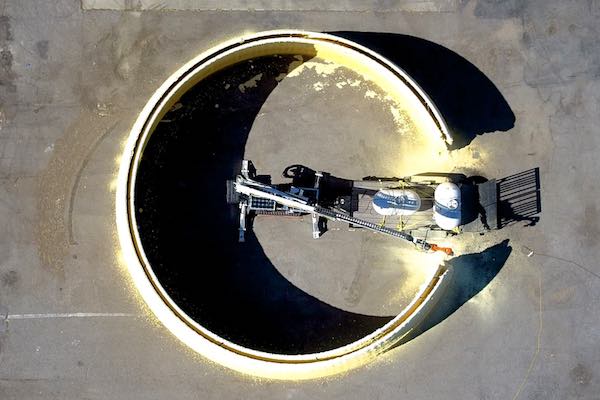
[Image above] MIT researchers have designed a system that can 3-D print the basic structure of an entire building. The system consists of a tracked vehicle that carries a large industrial robotic arm, which has a smaller, precision-motion robotic arm at its end. Credit: Steven Keating, Julian Leland, Levi Cai, and Neri Oxman/Mediated Matter Group
3-D printing technology is making inroads in a multitude of industries—automotive, food, defense, medical, and electronics, to name a few.
Yesterday I wrote about a research team that is using a 3-D printer to create artificial tissues to replace injured human tissues.
It comes as no surprise that a researcher from Massachusetts Institute of Technology decided the building industry should join the 3-D printing party.
Steven Keating, a mechanical engineering graduate, led an MIT research team to build a system consisting of a giant robotic arm that sprays out material from a nozzle to construct a building enclosure.
In a video of the system in action, a giant robot arm constructs the initial outline of a circular building, spewing what looks like foam insulation. A time-lapse video shows an igloo-shaped building rising from the ground. The arm can also provide additional functionalities, with a scoop attached to the end to dig dirt and perform other construction duties.
The system “can be easily adapted to existing building sites and equipment and will fit existing building codes without requiring whole new evaluations,” Keating says in an article on MIT News.
The article also mentions the benefits of creating buildings via 3-D printers. “Such systems could be deployed to remote regions, for example, in the developing world, or to areas for disaster relief after a major storm or earthquake, to provide durable shelter rapidly.”
Keating, who earned his Ph.D. with this project, says buildings could be custom-designed based on location or climate, for example. “A building could have thicker, more insulated walls on its north side in cold climates, or walls that taper from bottom to top as their load-bearing requirements decrease, or curves that help the structure withstand winds.”
Keating’s paper, published in Science Robotics, is “Toward site-specific and self-sufficient robotic fabrication on architectural scales” (DOI: 10.1126/scirobotics.aam8986).
Watch the video below to see the magnitude of this giant robot/3-D printer.
Credit: Massachusetts Institute of Technology (MIT); YouTube
